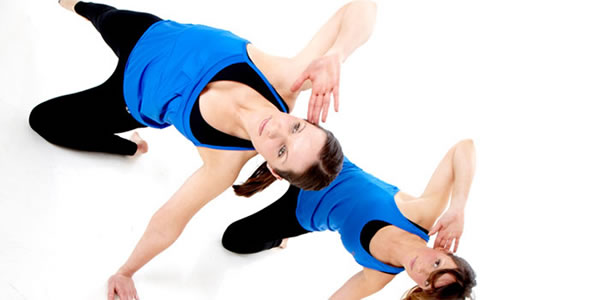
Many people spend hours in the gym doing cardio or weight training exercises; however flexibility, a key component for a healthy body, is often neglected. Increasing you flexibility as well as your cardiovascular fitness levels will result in a range of benefits for your health and fitness.
Why flexibility is so important
When you do flexibility exercises, you are stretching the muscles, which in turn lengthen the tendon which attaches the muscles to the bone. Having longer tendons gives the potential to increase the muscle size more during strength training, which enables you to increase your metabolism and fitness level through more intensive workouts.
Being more flexible can also prevent injuries when doing day to day activities, resistance or cardio training. As we age, muscle fibers also lose their elasticity, which means we are more prone to injury with sudden or jerky movements and improving flexibility can help to prevent this.
Stretching and flexibility are also thought to improve circulation, which can help to protect against diseases such as diabetes and kidney disease, as well as increasing blood flow to muscles which can help in improving your fitness levels through cardio and resistance training.
It is essential to stretch before and after a cardio or strengthening workout in order to warm up muscles and reduce the risk of injury. Reduced injury risk and warm muscles means you can train harder and get more benefit from your workout, leading to better overall fitness levels.
A 2009 study also found that flexibility was associated with lower levels of arterial wall stiffness, which may reduce risk of stroke or heart disease.
The best ways to increase your fitness levels
The most efficient way to increase your cardiovascular fitness levels is to do cardio workouts. Anything that gets your heart beating faster is doing you good in terms of cardiovascular fitness. Interval training, with short bursts of high intensity activity, followed by a recovery period has also been shown to be highly effective in increasing cardiovascular fitness levels.
The best ways to become more flexible.
You don’t need the flexibility of an Olympic gymnast to reap the benefits of a limber body. The easiest way to increase your flexibility is to stretch on a daily basis, although one study published in the Journal of Strength and Conditioning research suggested that after a period of one month stretching daily, the same level of flexibility could be maintained by stretching just two or three times per week.
A range of stretches that involves all the main muscle groups is ideal, however, if you are pushed for time, you may be better off focusing on the muscles groups which you use the most, for example leg muscles if you run on a regular basis, or back and shoulder muscles if you do a lot of lifting, whether it is weights or children.
As with any exercise, it is essential to perform the stretches correctly to prevent injury and to get the maximum benefit. Deep breathing and slow movement is essential to get the most out of each stretch and to get the anti-stress benefits that are also associated with flexibility exercises.
Incorporating alternative workouts into your routine such as yoga, tai chi or pilates that include flexibility work is also a good way to make you more limber whilst also increasing your strength, toning your body and in higher intensity workouts improving your cardiovascular fitness.
Swimming can also be a good way to increase flexibility of the shoulders and back and has the benefit of being low impact, a cardiovascular workout and a good calorie burner.
Some recent research has also suggested that a well-constructed resistance training program can also have benefits for flexibility, when the correct choice of exercises is made. However, this theory requires further investigation before it can be used practically.
